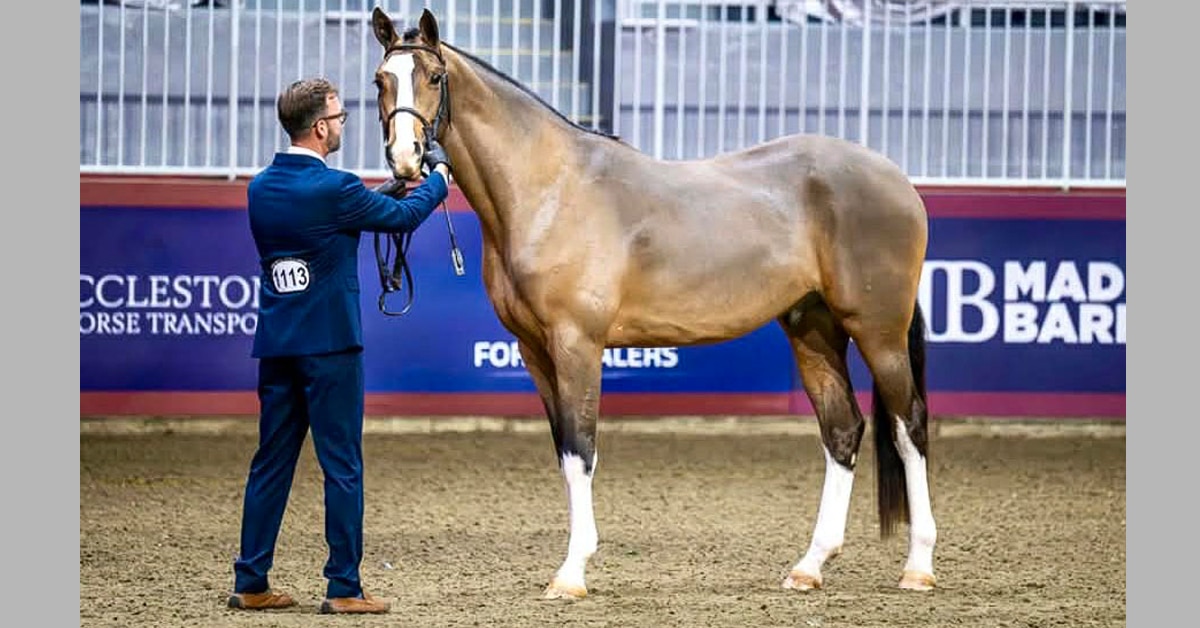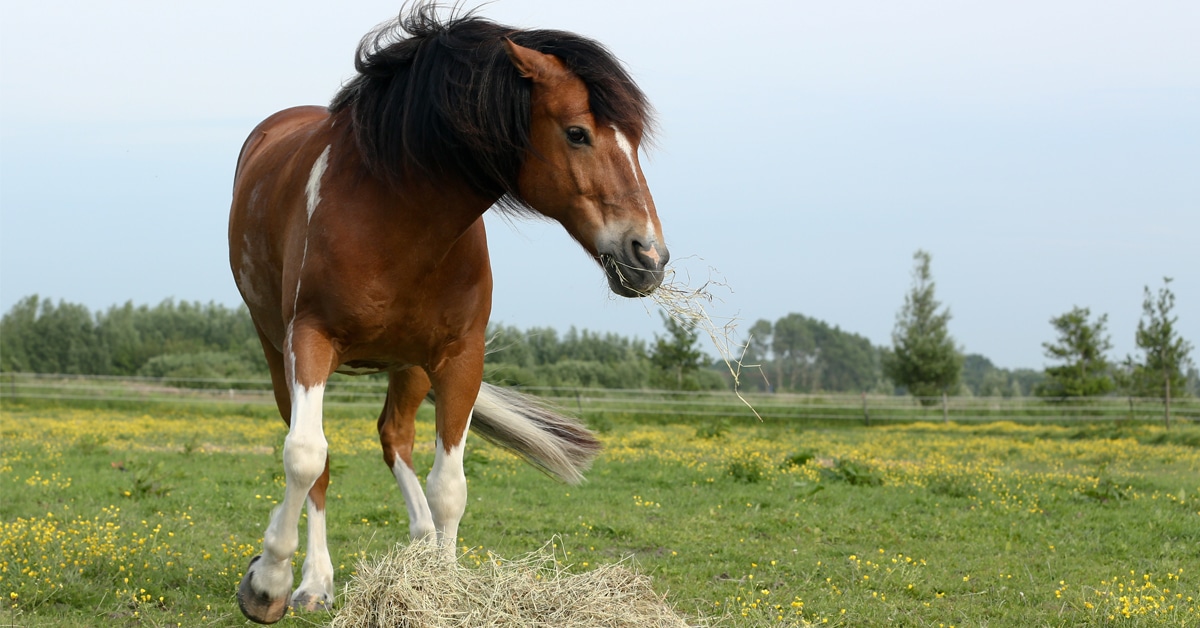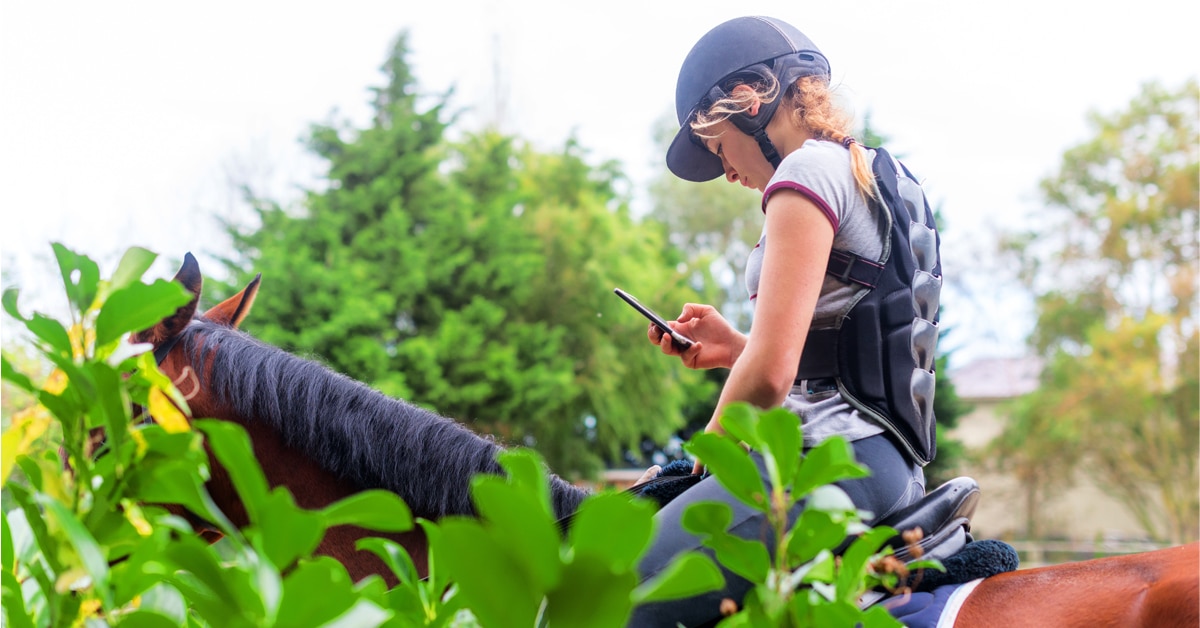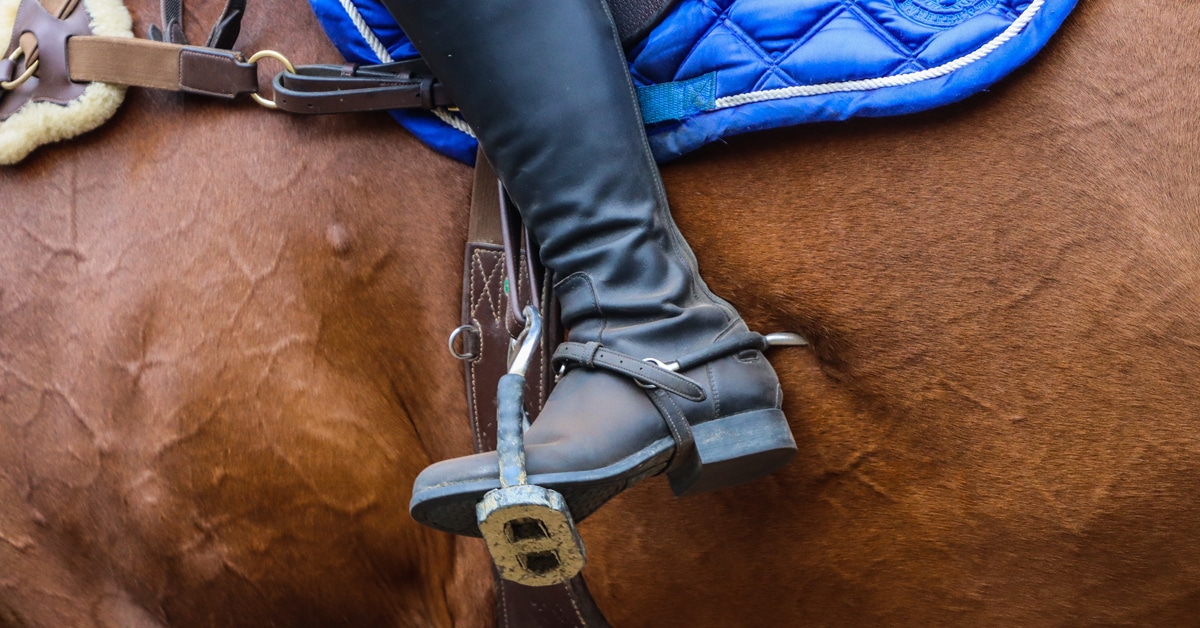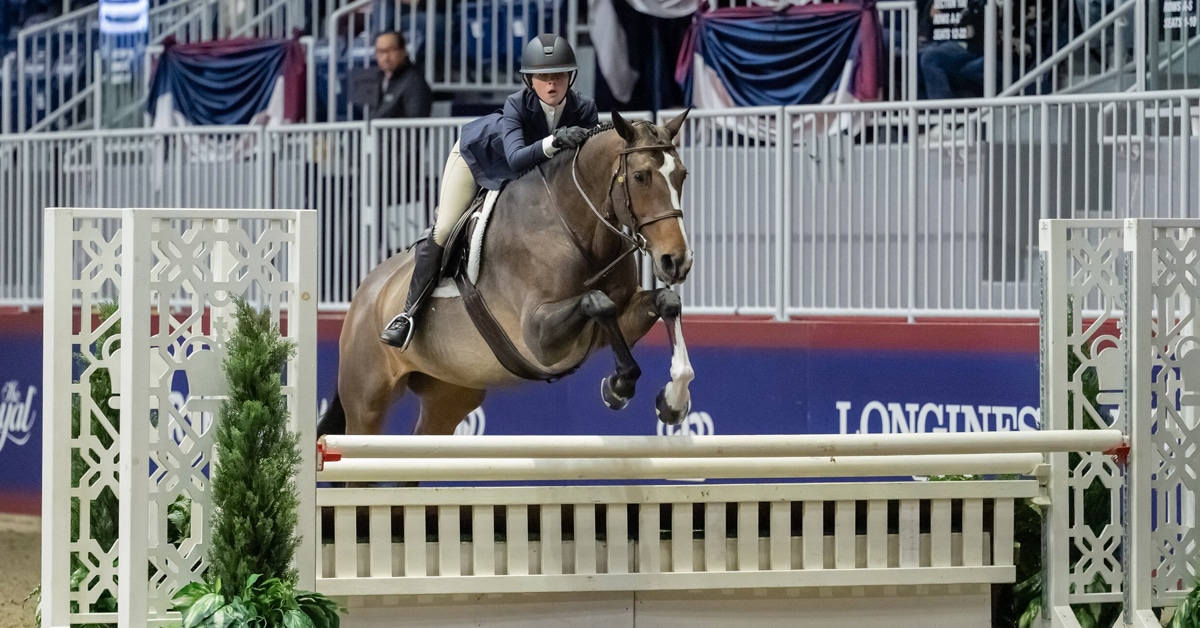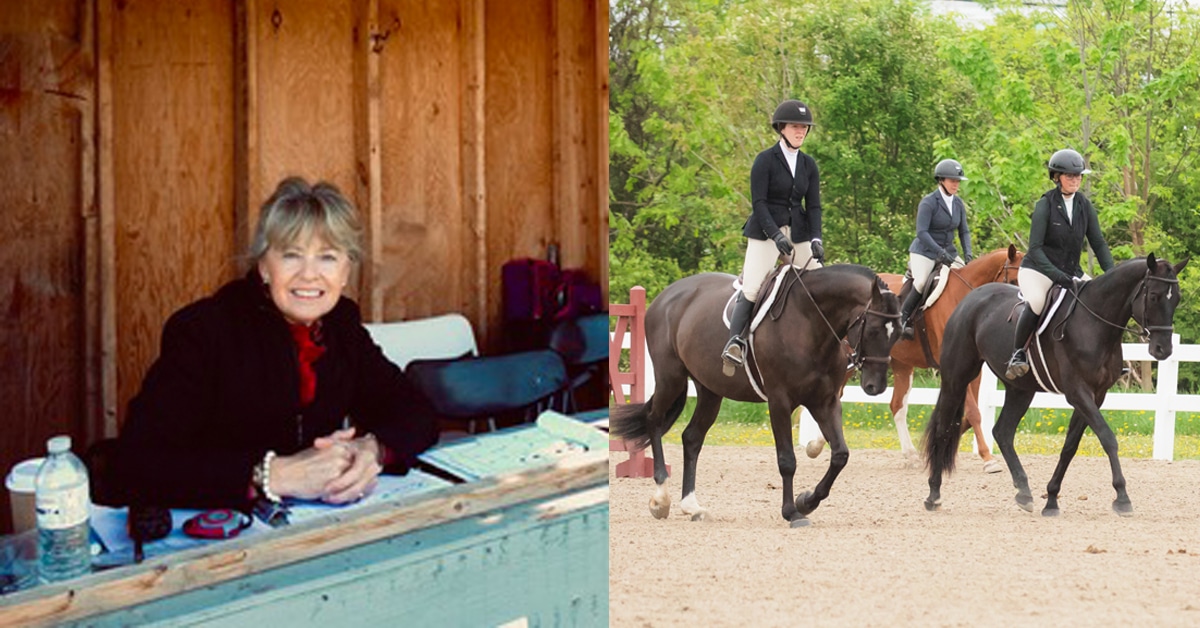Robyn Baechler is an Ontario-based Equestrian Canada Senior hunter, jumper, equitation and hack judge, Canadian Sport Horse judge and inspector. She recently spoke to HorseSport.com about suitability, presentation, pet peeves and preparation.
What do you look for when a horse first enters the ring?
First impressions are so important. Judges pay close attention the second a rider steps into the ring. Along with writing down the rider number, many make a notation regarding the suitability and presentation of the horse-and-rider combination. We like to see the combination matched physically and temperamentally.
Physically, a well-matched horse and rider suit one another. An example might be a 16.2-hand horse paired with a rider whose skill set equals the ride on that horse. Their lower leg is long enough that it can be used effectively, and we would see the rider’s foot resting in the stirrup iron just above the belly of the horse.
Examples we don’t want to see are small ponies ridden by riders who are much too big, with legs that hang down way beyond the belly, or a 17.1-hand full-bodied animal ridden by a small child whose lower leg is completely ineffective.
We also want to see a combination matched for temperament. Judges can always tell if a rider is temperamentally well-matched with her horse. Example: A tense green horse that steps into the ring with a calm, experienced, competent rider would be suitably matched. If you take the same green horse and pair it with a green rider who is afraid, the outcome is never good.
Presentation of the horse and rider is a fundamental part of my first impressions. As a rider, you want to make an impact the second you step into the ring. The horse must be in good weight, scrupulously clean, coat shiny with no sweat stains. White legs must be clean and feet polished. A good clipping job is essential.
Make sure your braids accentuate your horse’s appearance and do not detract from it. A very long neck can be made to look a normal length with fewer braids, while a short neck will look better with a few more braids. If you choose not to braid, then your horse’s mane should be pulled short, be one length, and lie flat on the neck. Never braid the tail if you don’t braid the mane.
Rider appearance is equally important, with attention to the details of conservatism. Have clean, properly-fitted tack with a white saddle pad that has a two-inch border around the saddle.
A pet peeve of mine is a stirrup leather so long it hangs down along the horse’s side. The bridle should fit the horse’s head, be the same colour as the saddle, with all keepers and runners done up and in good repair.
The most important aspect of a rider’s attire is their boots. Since the lower leg acts as a stabilizer, anchor, rudder, brake and accelerator, the boots must fit both the calf and the ankle properly and come up high enough on the leg to provide a polished look.
Jacket, breeches, and shirt should be clean and conservative. I like to see riders wear gloves.
I take very seriously a pair that steps into the ring beautifully turned out, with attention paid to every detail of conservatism and cleanliness.
What are the most common errors you see in the hunter ring?
The obvious major faults would include a rail, a refusal, bad behaviour, or leaving out a stride. More common errors have to do with lead issues, adding a stride in a line or finding a long or deep distance to a jump. Cutting corners, being strung out, or swapping in front of the jump are also things we often see.
Occasionally, I will see a rider step into the ring, trot a few steps, walk and then pick up the wrong canter lead. Realizing her error, she then trots and picks up the correct lead. Once you pick up the canter at the start of your trip, you are committed to the canter. If you break that canter stride to correct the lead, you are scored for breaking stride, which is a 55. Best option if you do pick up the wrong lead is to do a flying change to correct.
When you score a class out of 100, how much do certain errors cost you?
A quick break-down of the scoring would look something like this:
- 90 to 100 would be a stunning trip, fault-free, that ticks all the boxes of proper form.
- 80s: This would be a beautiful trip with great form and a horse that jumps with an expressive style
- 70s: This is a decent trip with one or two jumping faults
- 60s: This would be a mediocre trip at best that would include several minor faults
- 50s: A poor trip with both major and minor faults
- 40s: This is a very poor-quality trip with major faults, such as a rail or refusal
How do you break a tie?
If you have two trips of equal quality, the horse with the superior jumping style, athleticism and willing attitude would come out on top. This would be a horse that never pins or wrings his tail, and wears his ears well, not to mention is turned out beautifully and presents well on entering the ring.
Breaking a tie from a points perspective would see the horse with the most points over fences win.
How can you best ride a hunter under saddle class?
We are looking for the best athletic mover. When you are allowed into the ring before the class starts, make the best use of your time to warm up your horse. Judges are often watching and a stellar mover will catch their eye before the class starts.
Take the opportunity to identify another horse that might be fresh and remember to keep your distance. Pay attention to any horses that have a red ribbon in their tail.
I appreciate riders who use the quarter line. It gives the judge an unrestricted view of the horse’s conformation, movement and manners. Savvy riders often use both quarter lines in both directions.
Try not to get boxed in. Stay well away from others, especially at the canter.
Adjusting your number toward the judge is essential. Nothing is more frustrating than not being able to see the rider’s number.
When asked to line up in the centre of the ring, don’t crowd the horse beside you. At this point, a judge is simply verifying rider numbers. Packing tightly together in the centre doesn’t change the pinnings.
What is your advice for equitation and medal trips?
We are focussing on rider ability and looking to test how effective the rider is in bringing out the best of their horse’s abilities. It is easy for a judge to recognize a rider who has worked hard on their skill set. This rider would demonstrate a perfect median or base position, a phenomenally secure lower leg with a deep, flexible heel, a tall supple upper body, quiet educated hands and eyes that are always focussed up and ahead.
Riders should practice ‘perfectly’ the skills they want to replicate in the show ring. ‘No Stirrup November’ is a great opportunity to work on not only a solid base position, but also riding with an independent seat and hands.
A top equitation ride would see a rider making as few noticeable adjustments as possible. Their aids should be invisible. They step into the ring confident in their ability and approach the course with a workman-like attitude.
A medal class gives the rider an extra opportunity to excel through the flat phase. Bringing back the top 12 riders from the over-fences phase gives the judge a second look at the riders on the flat. Forty per cent of the overall score is based on the flat phase, and here we look for precision in the upward and downward transitions, a rider who can keep a leg-to-hand connection through all three gaits with a solid workman-like position.
What is one thing that you wish trainers paid more attention to when setting up a horse/rider combination for the show ring?
In a word: BASICS. A solid riding foundation is essential, not only for the rider’s safety, but for the well-being of the horse. Riders who have not mastered the basics should not be showing. Every year, we see people not yet ready to be jumping, their stirrups are too long, their lower leg is ineffective, and they have only mastered the basics of steering, yet they are jumping.
Showing is an opportunity to exhibit your skills, but if you haven’t perfected even rudimentary skills, why are you showing? Perfecting your skill comes with doing your riding homework at home before going to the show.
Do all judges judge the same?
Judging jumpers is objective. Judges in a jumper jury see things the same way. For example, four faults for a rail, four faults for a refusal, being over the time allowed incurs time faults. It’s the science of the jump.
Judging hunters and equitation is done with a subjective view. It’s a little bit like the art of the jump or the art of the ride. Each judge comes to the booth with their own areas of experience, knowledge, and expertise. They also have their own ideal mental image of what a perfect hunter should look like, how he should jump or flat. Likewise for an equitation rider.
If you have 25 entries in a class, most judges will arrive at the same top 10 placings, but perhaps in a different order then another judge.
Some judges use a numerical scoring system and keep a staggered order based on the numbers. Some judges don’t use numbers, but instead rely on their own system of score-keeping. Every judge has their own symbols or shorthand that represent on paper what they have just seen in the ring. With a good book-keeping system, a judge can look back on their card to a trip that took place at the beginning of the class. They can accurately compare that trip to one that they are about to score.
The Latest
